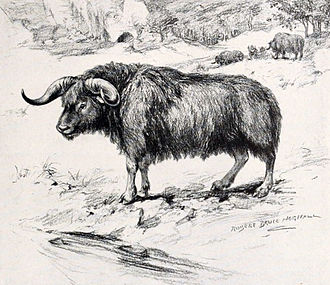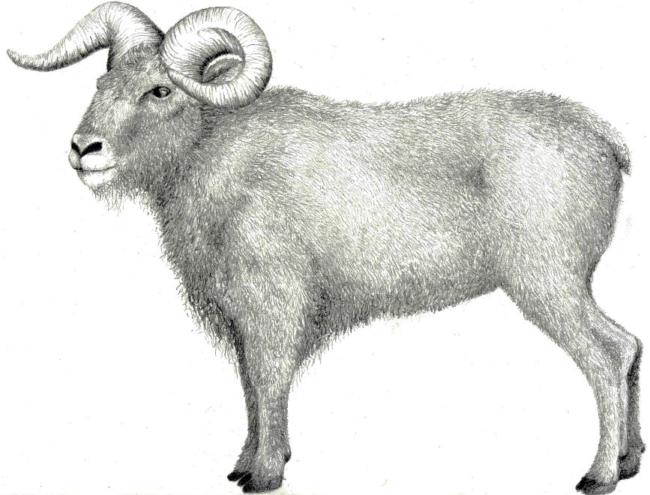White Bison
Far above the tree line, where the wind and snow blow all year round, the unusual White bison roam.
These sturdy herbivores plod slowly across the North Ice on a continuous trek west.
These sturdy herbivores plod slowly across the North Ice on a continuous trek west.
Basic Information
Anatomy
Covered in white or grey fur, these massive bovines are built of powerful muscle and dense bone.
The sharp, upwardly curved horns (grown by both male and females) are used for defense, as well as scraping frostmoss off of hard to reach surfaces.
The sharp, upwardly curved horns (grown by both male and females) are used for defense, as well as scraping frostmoss off of hard to reach surfaces.
Genetics and Reproduction
Traditional mammalian reproduction.
Growth Rate & Stages
A mother White Bison will carry her calf for 300 to 340 days.
White Bison calves are usually born as twins, though triplets are not unheard of.
A calf can walk within an hour of birth, and will be running, playing and nursing within the day.
A calf will stay by it's mothers side for 3 years, and reach maturity by 5 years old.
At 5, females become breeding members of the herd, and males are forced out to find viable females elsewhere in the massive migrating herd.
White Bison calves are usually born as twins, though triplets are not unheard of.
A calf can walk within an hour of birth, and will be running, playing and nursing within the day.
A calf will stay by it's mothers side for 3 years, and reach maturity by 5 years old.
At 5, females become breeding members of the herd, and males are forced out to find viable females elsewhere in the massive migrating herd.
Ecology and Habitats
White bison only live in the North Ice, they are adapted to surviving the arctic conditions here and will overheat and die within days if they are removed from their native habitat.
Dietary Needs and Habits
White bison seem perfectly adapted to survive off only Frostmoss, a short, spongy grey lichen that grows on ice shelfs and rocks that are tilted slightly away from the biting wind.
Additional Information
Social Structure
White bison live in vast herds.
Males live on the outskirts of the Mega-herd, roving from inner herd to inner herd looking for mates.
When not looking for mates, males are tasked with protecting the herds from smaller predators, or warning of danger.
Females and calves are broken into dozens of smaller, though still very large inner herds. Each of these is a seperate family group that moves within the Mega-Herd, but has it's own sovial hierarchy and pecking order.
Males live on the outskirts of the Mega-herd, roving from inner herd to inner herd looking for mates.
When not looking for mates, males are tasked with protecting the herds from smaller predators, or warning of danger.
Females and calves are broken into dozens of smaller, though still very large inner herds. Each of these is a seperate family group that moves within the Mega-Herd, but has it's own sovial hierarchy and pecking order.
Domestication
White bison are very difficult to domesticate, primarily because they cannot survive in warmer southern lands and few sapient races live as far north as they do.
Uses, Products & Exploitation
The bones of the White bison are very dense, and can be made into fine tools by local tribes such as the Allpak.
Their furs are world renown for softness and heat-retention.
Their meat is tough and fibrous, but very nutritious.
Their furs are world renown for softness and heat-retention.
Their meat is tough and fibrous, but very nutritious.
Average Intelligence
Low, herd animal
Perception and Sensory Capabilities
While their eyesight is somewhat weak, they have excellent hearing and sense of smell.
Scientific Name
Althawr Jalid Bovidae
Lifespan
7 to 10 years
Average Height
7 to 8 ft. at the shoulder
Average Weight
2,500 to 2,800 lbs.
Average Length
10 to 11 ft.
Average Physique
Thick, corded musculature.
Dense bone and horn.
Dense bone and horn.
Body Tint, Colouring and Marking
White or Grey fur.
Brown or Blue eyes.
Brown or Blue eyes.
Geographic Distribution





Comments